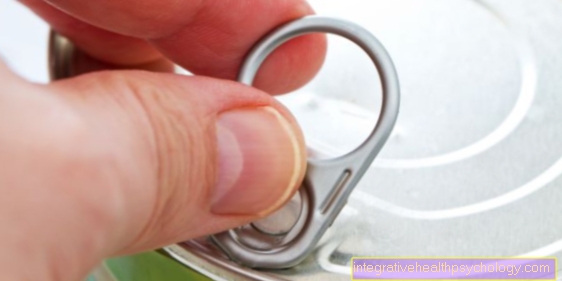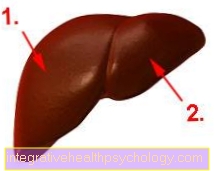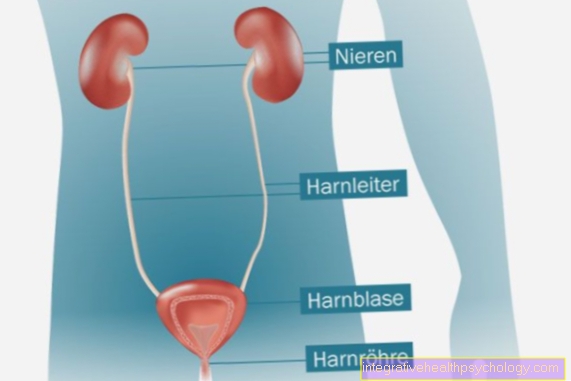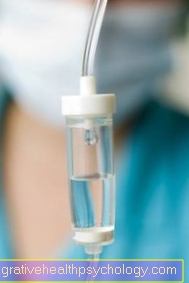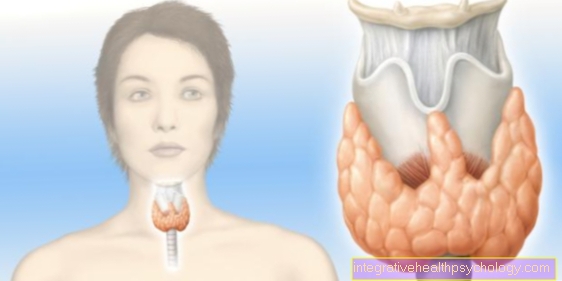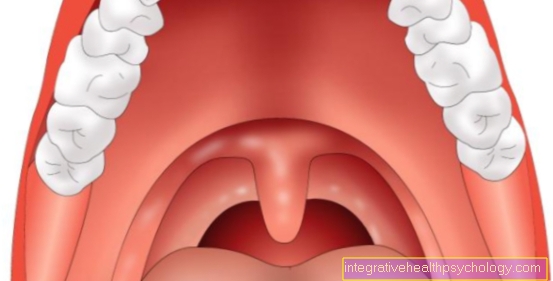How does the vagina change after giving birth?
introduction
During a natural vaginal birth, the female vagina changes. It is under enormous pressure and has to expand tenfold in order for the child to pass through the birth canal. Since the vagina is elastic, this stretch can recede. However, complications such as pelvic floor weakness can also develop.
Furthermore, traumatic birth injuries can occur which, depending on the extent, must be treated and take some time to heal. Permanent damage is rare, however.

How does the vagina change after giving birth?
In a natural birth, the child migrates out of the uterus through the birth canal in order to finally see the light of day. The birth canal consists of a muscle tube, the vagina. This is able to increase tenfold at birth. The pelvic floor muscles also loosen up to allow unhindered childbirth. In addition to the vagina, bony structures such as the pelvis also play a major role in the birth process.
How much the structures of the female body have to change and the extent to which complications arise depends on the individual circumstances of the woman as well as on the size and position of the child. In addition to the severe stretching of the vaginal canal, this can also be damaged in unfavorable situations.
Depending on the elasticity of the muscles, the size of the child's head, the preparation for the birth and the speed of birth, cracks can develop. The vagina usually tears at its side or back vault. Large vaginal tears close to the cervix are also possible and often require surgical treatment. Cracks can bleed and burn, and can be uncomfortable to heal. Depending on the depth, they have to be sewn or heal on their own.
In most cases, once they have healed, they can no longer be seen or felt. In rare cases, however, scar hypertrophy can occur. Furthermore, dam cracks can occur. A perineal incision may also be necessary if there is a mismatch between the opening of the vagina and the child's head size. Depending on the depth of the crack, it heals at different rates. If the muscle layer is involved, there may be problems using the toilet. You may experience pain when walking, sitting, or defecating. Scars that occur after tears are sewn are weak points that can tear open again in a further birth.
After the birth, the weekly flow takes place, during which wound secretion runs off. This is completely normal and persists after about three weeks. During the puerperium there is a change in hormones. This can cause a lack of estrogen, which makes the mucous membrane of the vagina thin and prone to injury. In addition, vaginal dryness can occur and the natural vaginal flora can change.
Due to the loosening of the pelvic floor muscles, bladder weakness can also occur, which can recede spontaneously and should be observed. Since the vagina is elastic as a muscle tube, it recedes again after a birth.
Changes that are externally visible or noticeable during sexual intercourse can be reduced, for example, with pelvic floor exercises. Permanent “being worn out”, as many women fear, does not occur.
For more information, read on: Vaginal tear during childbirth.
How long will the changes take?
The regression of the loosening and widening of the muscles can take a few weeks to months. This depends, among other things, on the training condition of the pelvic floor muscles before the birth and the training after the birth. The vaginal canal can be permanently changed after a birth, but this is not visible from the outside and often cannot be felt.
If the mucous membrane has been injured, it can itch, burn and be uncomfortable when moving, but it heals within a few weeks. Very deep, especially perineal cracks, however, can lead to discomfort for a few months. How long after a birth you should not have sexual intercourse cannot be said in general terms. If the woman feels lust, larger wounds have healed and there is no pain, nothing speaks against it.
Read more about the topic here: Perineal tear.
What can I do about the changes myself?
Vaginal changes and complications during childbirth can be counteracted preventively. In the last six weeks before the due date, a perineal massage can be performed every day to loosen the muscles and prepare for the birth. In addition, the targeted training of the pelvic floor has a positive effect on the strain during childbirth.
After the birth, the slack muscles of the pelvic floor should be tightened, for example with postnatal gymnastics. In addition, the perineum and vagina can be rubbed with perineum massage oil. This is good for the mucous membrane and can also be helpful if the vagina is dry. If the vaginal dryness is perceived as very bothersome, an estrogen cream can help. In addition to vaginal changes, almost half of all pregnant women also develop hemorrhoids. These can be treated, for example, with oak bark extract, Sitz baths, especially during pregnancy, and often resolve spontaneously after birth. If this is not the case, laser treatment can be helpful.
more on the subject Training the pelvic floor you'll find here.
What can be surgically restored?
If the pelvic floor is weak, especially after very traumatic births, genital organs such as the vagina or uterus can sink. In addition, a weakness of the anterior or posterior vaginal wall can lead to a depression of the bladder or rectum. If this cannot be treated with pelvic floor training alone, surgery can be helpful.
The pelvic floor is restored and the organs are brought back into their position. In recent years, the use of Vicryl or polypropylene nets has also proven successful.
Cracks in the perineum and vagina, especially those involving muscles, are sewn under local anesthesia. Great attention is paid to the aesthetic result so that the injury is often no longer seen after it has healed.
What complications can arise?
The vagina does not always regress and heal undisturbed. There are some complications that can arise. During the puerperium there may be an obstruction of the weekly flow. This can lead to infection and should be treated promptly.
If a deep crack formed during childbirth, a scar forms. If this does not heal as usual, a so-called scar hypertrophy can occur. This is an excessive growth of the scar tissue, which can lead to problems with mechanical stress. Furthermore, the scar can become infected or tear open, especially if there is renewed mechanical stress in the form of another birth.
If severe pain or fever occurs after childbirth, a doctor should be consulted immediately. Due to the strong stress on the muscles, especially in the pelvic floor area, the holding function can be disturbed. The consequences can be incontinence or a sagging of the vagina or uterus. This manifests itself through uncontrolled loss of urine or a permanent feeling of pressure in the vagina. Since these complications are treatable, a doctor should be consulted early on. As a result of deep perineal tears and damage to the muscles involved, painful bowel movements or even incontinence can occur.
Many complications are often concealed out of charm. However, most of them are very treatable, which is why a consultation with a doctor is highly recommended.
Also read the article: The wound healing.




